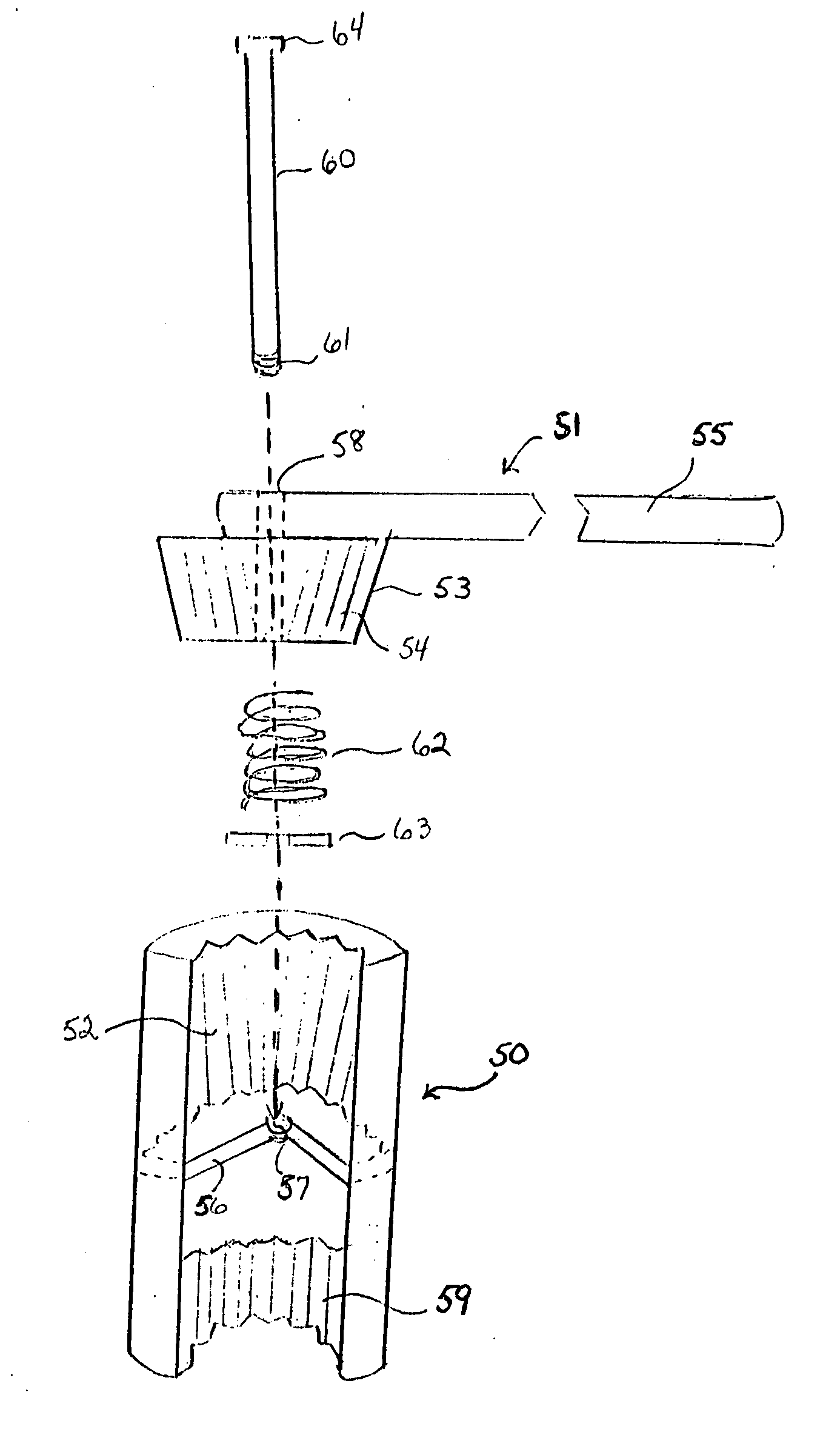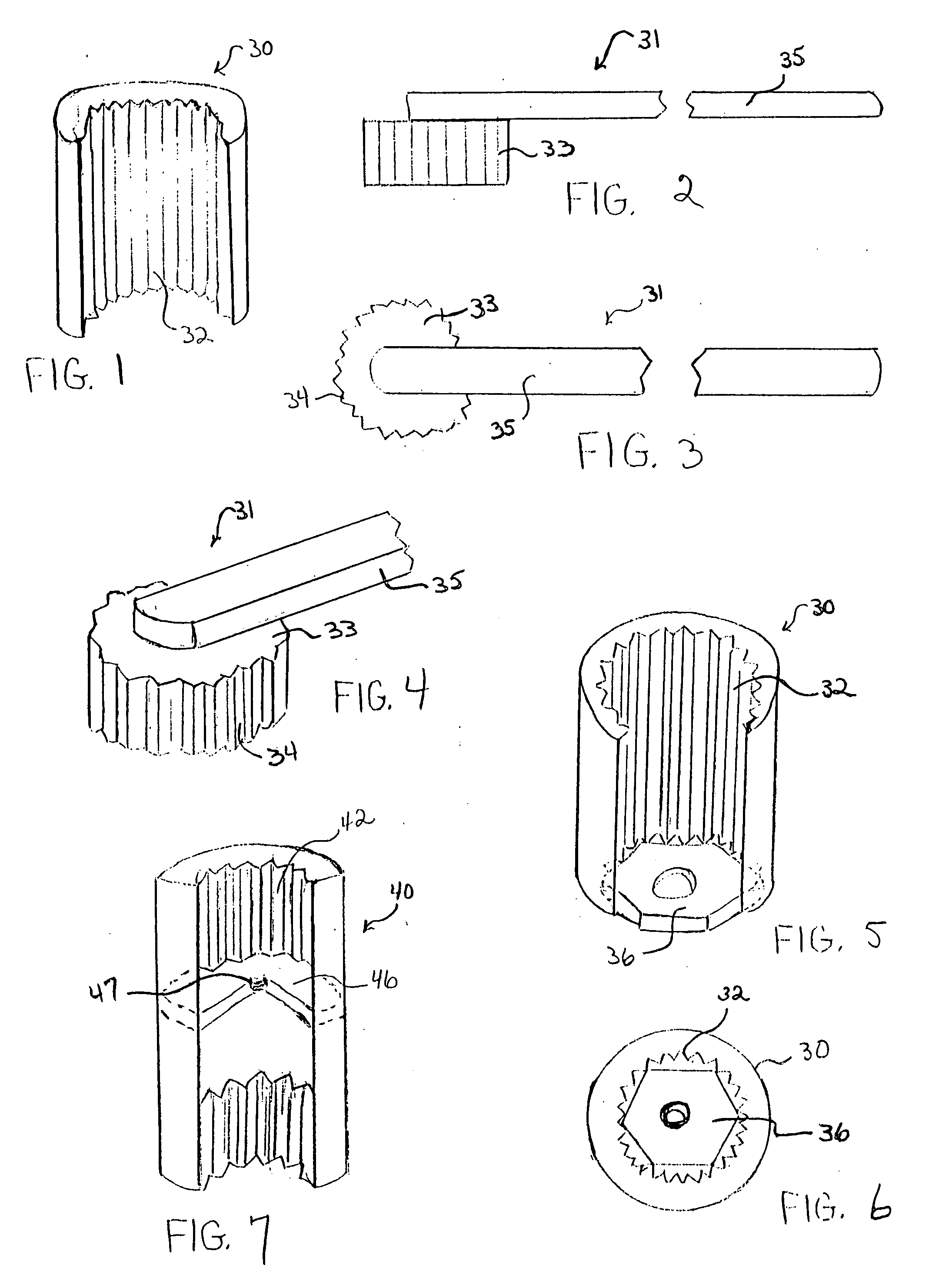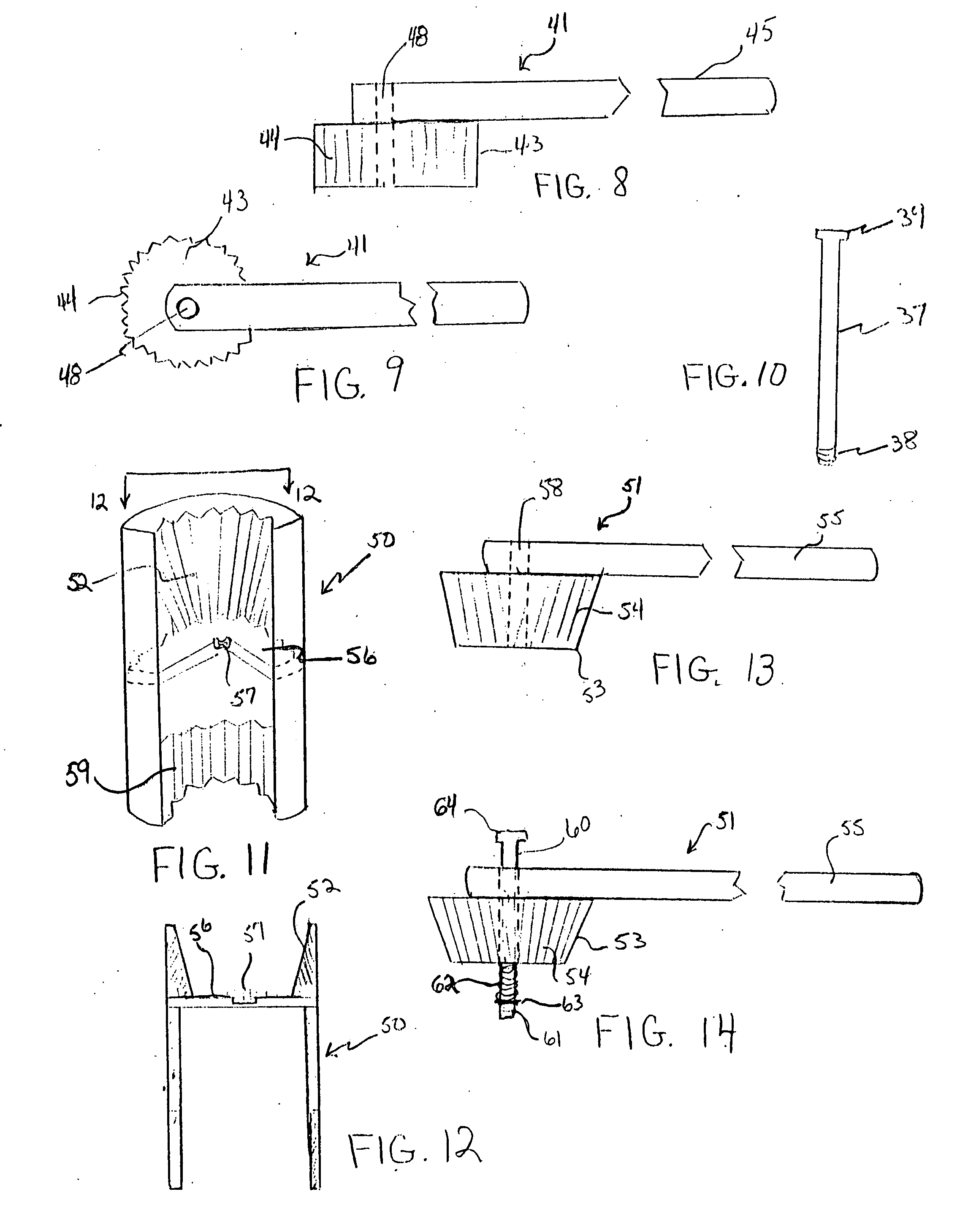Wrench for use in limited access areas
a limited access and wrench technology, applied in the direction of wrenches, screwdrivers, manufacturing tools, etc., can solve the problems of ratchet wrenches described above being subject to breakage, unable to provide enough space, and unable to meet the needs of use,
- Summary
- Abstract
- Description
- Claims
- Application Information
AI Technical Summary
Benefits of technology
Problems solved by technology
Method used
Image
Examples
first embodiment
[0049] the instant invention may consist of two parts, the socket 30 and the handle assembly 31. The socket 30, seen in FIGS. 1 and 5, may be a hollow cylinder that may have axially fluted interior walls. The fluting 32 may provide a good grip on nuts and bolts having different shapes, i.e., square or hexagonal. An example of a hexagonal nut 36 within the socket 30 may be seen in FIGS. 5 and 6. The handle assembly 31 may have a solid cylindrical head 33 with fluting 34 on its outer surface which may cooperate with and complement the fluting 32 of the interior of the socket 30. The head 33 may be attached to one end of a shaft 35. The shaft 35 may be affixed to the head 33 by welding or other means known in the art. The head 33 and shaft 35 may also be of singular construction. See FIGS. 2, 3 and 4. The head 33 may be inserted into the top of the socket 30 to form a socket wrench.
[0050] To use the wrench the socket 30 may be placed over the nut 36 or bolt (not shown) and the head 33 ...
second embodiment
[0051] the instant invention may also consist of a hollow cylindrical socket 40 and handle assembly 41. Referring to FIG. 7, the socket 40 may be divided into two interior compartments, an upper compartment and a lower compartment, by means of a transverse partition 46. The interior walls of both compartments may be fluted. The fluting 42 of the upper compartment may have the same tooth size and arrangement as in the lower compartment, or it may be different, according to usage and method of manufacture. There may be a depression or opening 47 with threaded walls centrally located on the upper surface of the partition 46. Alternatively, a threaded nut or small cylinder (not illustrated) may be welded to the center of the partition. The handle assembly 41 may also consist of a solid cylindrical head 43 with a fluted 44 outer surface and a shaft 45. There may be a smooth bore 48 through the end of the shaft 45 and extending through the center of the head 43. FIGS. 8 and 9.
[0052] A pin...
third embodiment
[0055] A small turning arc A may be seen in FIG. 16, while a larger turning arc B is illustrated in FIG. 17. When the straight sided socket 40 is used, the head 43 must be lifted upward a distance equal to the full depth of the head 43, the distance C as seen in FIG. 18, before the head 43 may be reinserted. The advantage of the alternately shaped system of the third embodiment may be evident in reviewing FIG. 19 which may illustrate the small distance D the head 53 must be lifted to disengage the two components before rotating and reseating the head 53.
[0056] To further increase the efficiency of the wrench, a compression spring 62 may surround the lower portion of the pin 60 extending beyond the bottom of the head 53. A washer 63 may be placed against the spring 62 before the pin 60 is screwed into the threaded opening 57 in the partition 56 of the socket 50. The pin 60 may have a flattened or enlarged stop 64 at the top so the head 53 may be restrained by the pin 60 from becoming...
PUM
 Login to View More
Login to View More Abstract
Description
Claims
Application Information
 Login to View More
Login to View More - R&D
- Intellectual Property
- Life Sciences
- Materials
- Tech Scout
- Unparalleled Data Quality
- Higher Quality Content
- 60% Fewer Hallucinations
Browse by: Latest US Patents, China's latest patents, Technical Efficacy Thesaurus, Application Domain, Technology Topic, Popular Technical Reports.
© 2025 PatSnap. All rights reserved.Legal|Privacy policy|Modern Slavery Act Transparency Statement|Sitemap|About US| Contact US: help@patsnap.com



